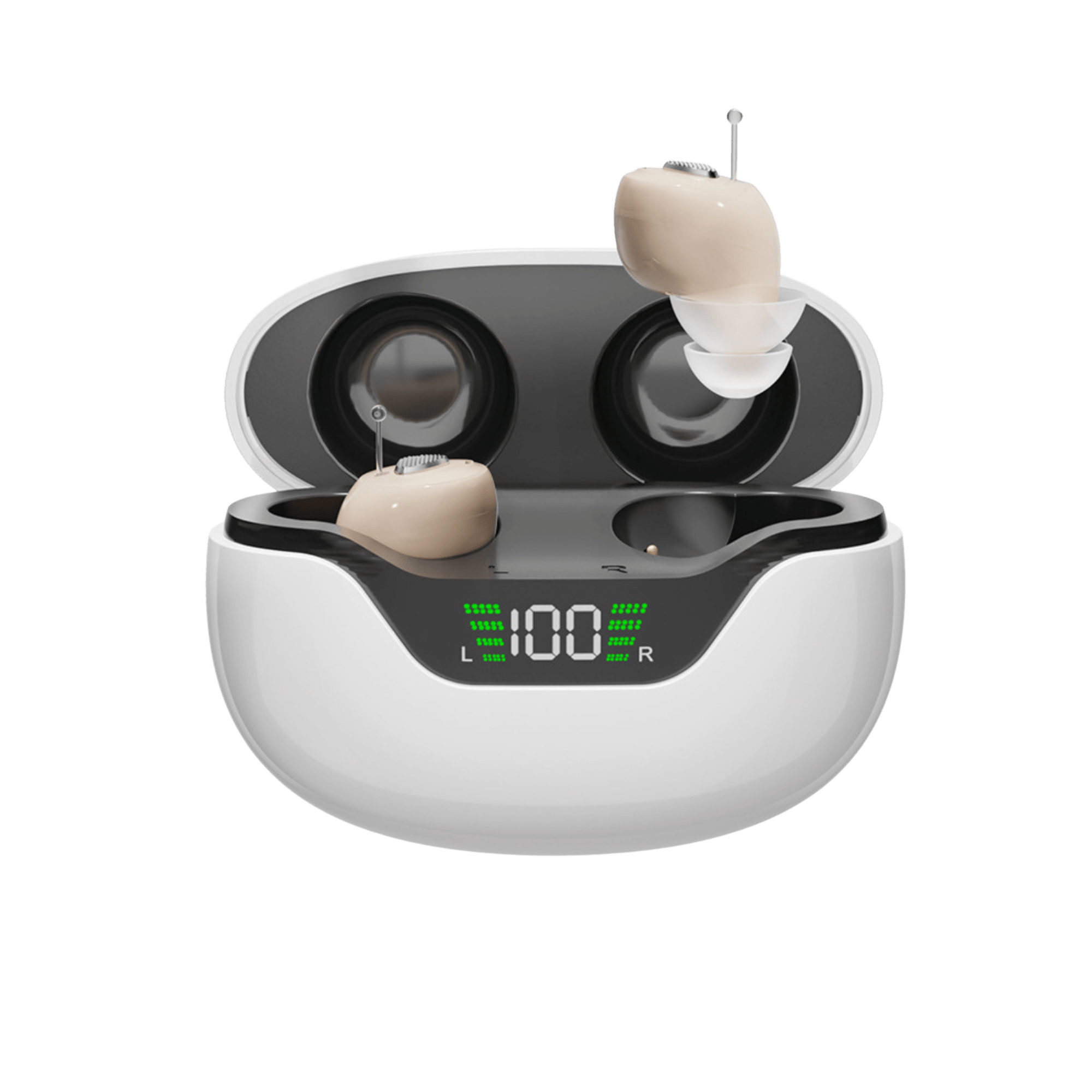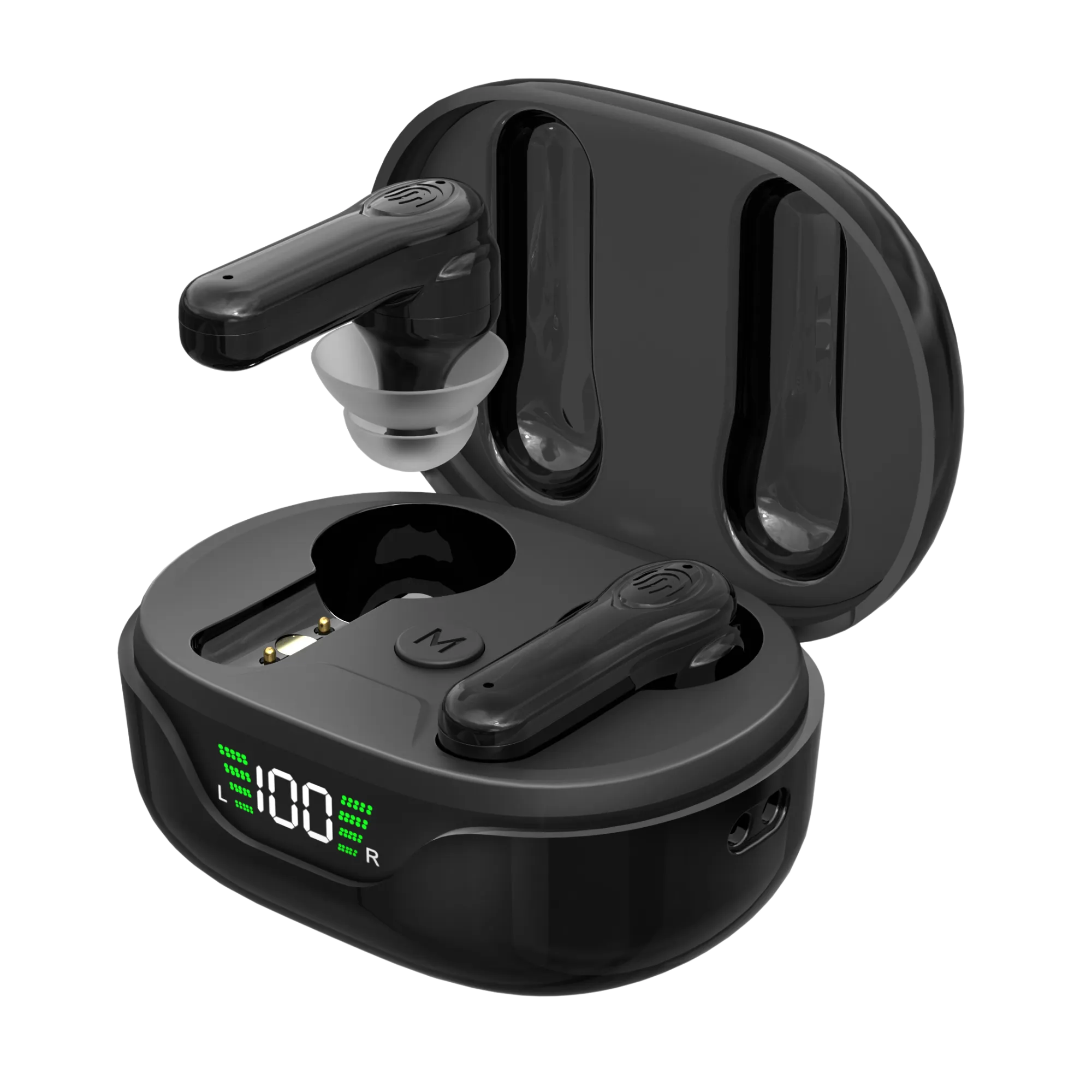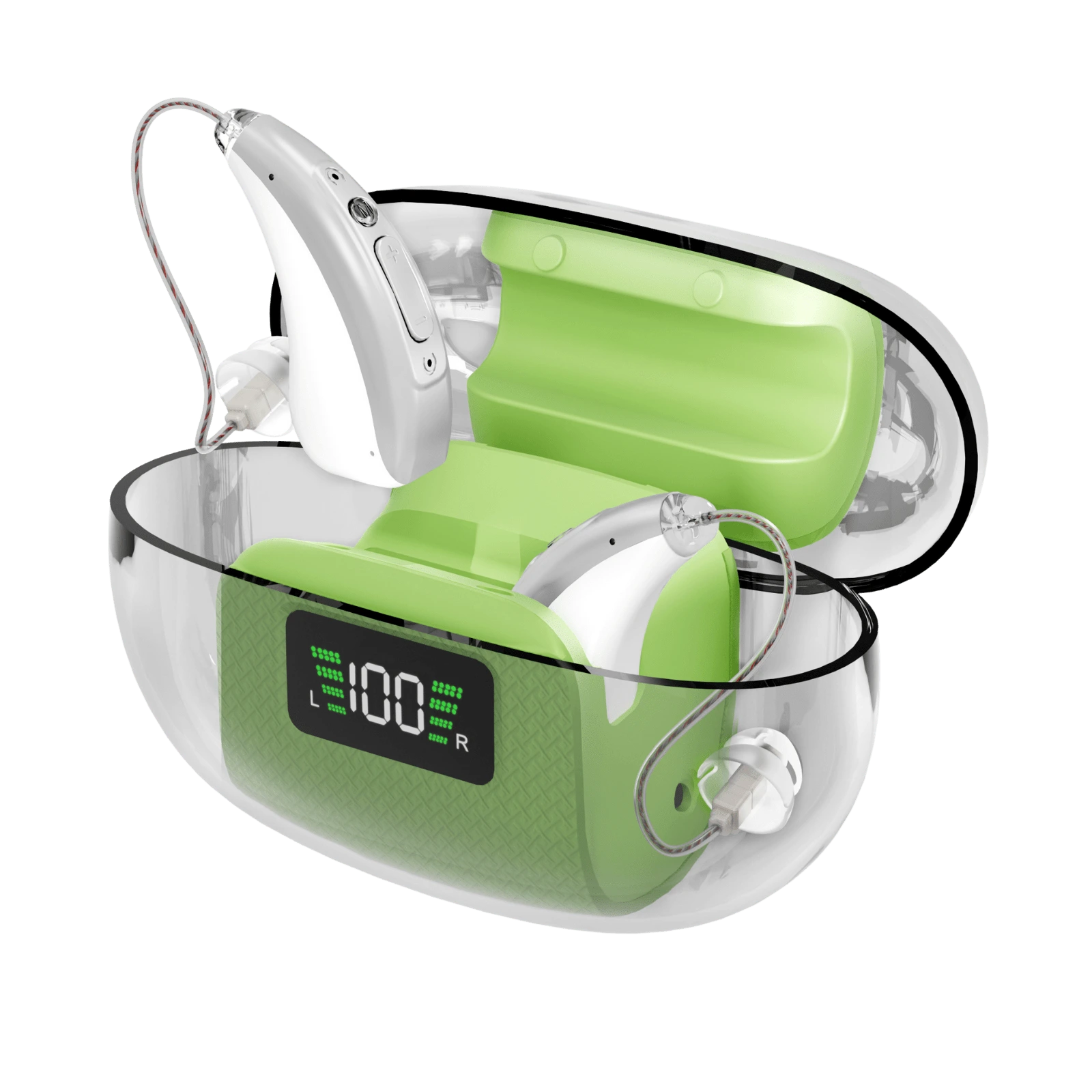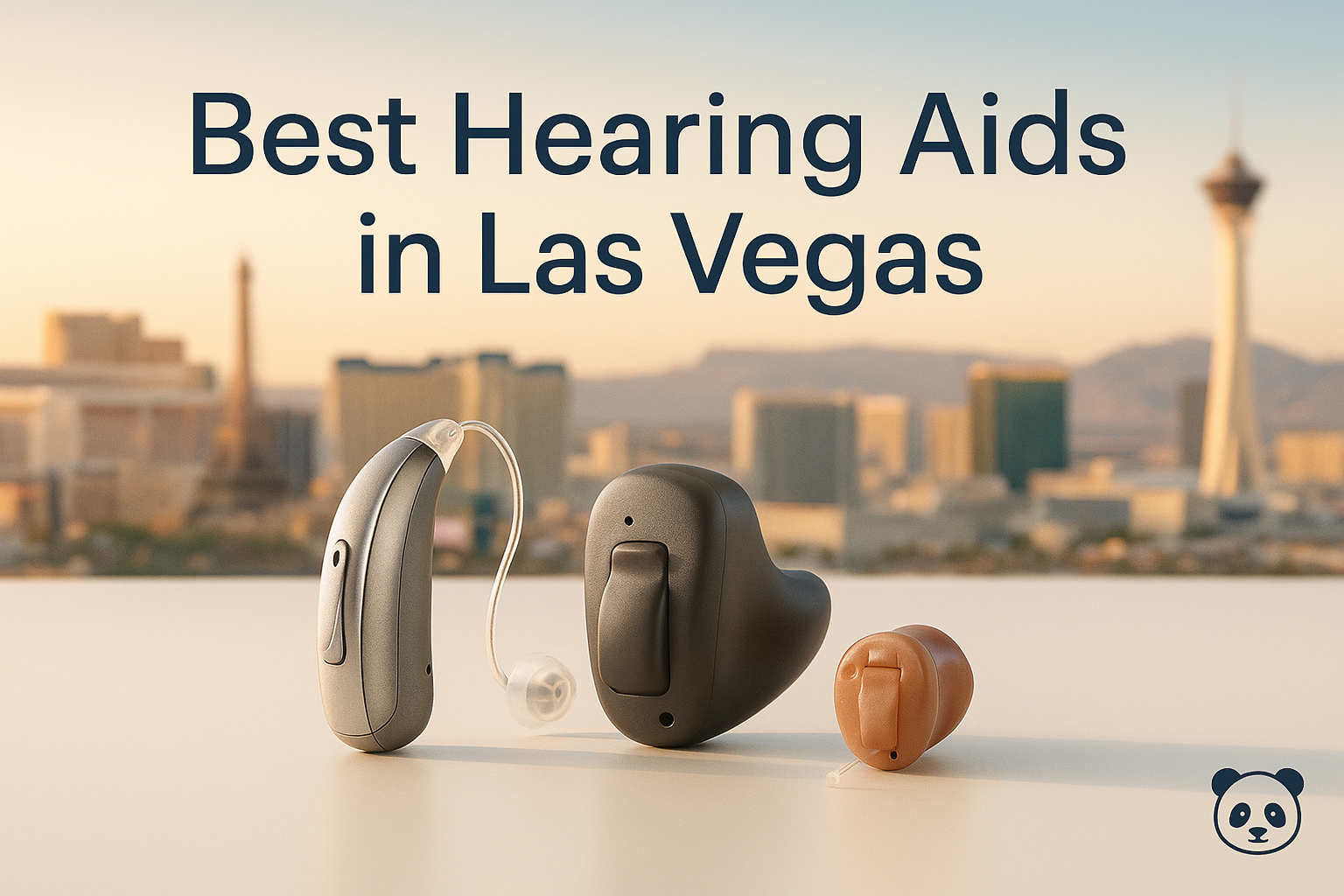Introduction
Taking the very first step toward better hearing may be an intimidating procedure for many people, particularly when the path involves the participation of medical experts. Individuals are now able to begin on the road toward good hearing on their own, thanks to the evolution of technology and the expanding consumer accessibility. It is now possible to discover the appropriate hearing aids without the assistance of a medical professional, to customize them without the need of molds, and to take advantage of designs that are feedback-free and tubeless. This detailed book is intended to equip you with all of the knowledge necessary to successfully navigate the world of self-directed hearing aids. Topics covered range from learning how to get the most out of your device to comprehending the complexities of feedback-free and tubeless design.
Your Own Hearing Journey, Part 1: How to Find the Right Hearing Aids on Your Own, Without a Doctor
Self-guided hearing aid fitting is becoming increasingly common, which is one of the significant trends occurring in the field of hearing healthcare. In the past, getting a hearing aid was a process that required a patient to make many trips to a medical professional or an audiologist. However, the terrain is shifting, and this part of the article explores how one might independently locate the appropriate hearing aids for themselves. It includes an in-depth analysis of the many aspects to take into account, such as being aware of the kind and severity of your hearing loss, becoming acquainted with the various types, makes, and models of hearing aids, and gaining a knowledge of how to conduct an evaluation of your own hearing abilities.
Part 2: The Advantages of Hearing Aids That Do Not Produce Feedback and How to Obtain These Hearing Aids
The phenomenon of feedback, which manifests itself in the form of a high-pitched whistling sound for the majority of hearing aid wearers, may be both annoying and humiliating. But now, thanks to current technology, we live in an era of feedback-free devices, which has completely changed the way users interact with their equipment. In this article, you will learn about the ingenious mechanics that are behind these devices, the various benefits that they provide over regular hearing aids, as well as some practical suggestions for purchasing feedback-free hearing aids and using them effectively.
Optimizing Your Hearing Experience, Part 3: Getting the Most Out of Your Hearing Aids Even If They Don't Have Molds
Hearing aids without molds, also known as open-fit hearing aids, provide a listening experience that is both more comfortable and more natural. As a result, user satisfaction is increased when using these types of hearing aids. In this part, we dig into the features of these moldless devices, explore the advantages they provide in terms of comfort, convenience of use, and sound quality, and provide recommendations on how to optimize them for the best possible hearing experience. Moldless hearing aids have been increasingly popular in recent years due to their ease of use, comfort, and sound quality.
A complete rundown of the benefits of tubeless hearing aids is included in the fourth and last section of this guide.
Hearing aids that do not have tubes provide a more covert design while still producing high-quality sound. Conventional behind-the-ear (BTE) hearing aids have tubes that are visible, which can make users feel self-conscious. This section offers a thorough introduction to tubeless hearing aids by analyzing its construction, the numerous advantages they confer, and the most important factors to take into account when selecting a tubeless hearing aid.
Enhance Comfort and Sound Quality with the Top-Rated Hearing Aid Liners, the Fifth and Final Section
Liners for hearing aids are meant to act as a barrier between the hearing aids and the wearer's ears. Hearing aid liners of high quality can make a significant difference in the level of comfort you enjoy when wearing hearing aids. In this last section, we will investigate the function that they play in enhancing both comfort and sound quality, describe the many types of liners that are available, and offer some advice on how to locate the sorts of liners that are most suited to your individual requirements and tastes.
Conclusion
The design and functionality of hearing aids have advanced significantly over the years, which has made it possible for users to personalize their hearing experience to better suit their specific requirements. You may optimize your hearing capacity without the assistance of a trained medical practitioner if you have a solid awareness of the possibilities and make decisions based on that knowledge. This book will serve as your entire roadmap to navigating the terrain of hearing aids, giving you the ability to improve your quality of life via increased hearing. We really hope that the information we have provided enables you to take charge of your hearing health and take advantage of the myriad advantages that technologically advanced hearing aids have to offer.
Taking the very first step toward better hearing may be an intimidating procedure for many people, particularly when the path involves the participation of medical experts. Individuals are now able to begin on the road toward good hearing on their own, thanks to the evolution of technology and the expanding consumer accessibility. It is now possible to discover the appropriate hearing aids without the assistance of a medical professional, to customize them without the need of molds, and to take advantage of designs that are feedback-free and tubeless. This detailed book is intended to equip you with all of the knowledge necessary to successfully navigate the world of self-directed hearing aids. Topics covered range from learning how to get the most out of your device to comprehending the complexities of feedback-free and tubeless design.
Your Own Hearing Journey, Part 1: How to Find the Right Hearing Aids on Your Own, Without a Doctor
Self-guided hearing aid fitting is becoming increasingly common, which is one of the significant trends occurring in the field of hearing healthcare. In the past, getting a hearing aid was a process that required a patient to make many trips to a medical professional or an audiologist. However, the terrain is shifting, and this part of the article explores how one might independently locate the appropriate hearing aids for themselves. It includes an in-depth analysis of the many aspects to take into account, such as being aware of the kind and severity of your hearing loss, becoming acquainted with the various types, makes, and models of hearing aids, and gaining a knowledge of how to conduct an evaluation of your own hearing abilities.
Part 2: The Advantages of Hearing Aids That Do Not Produce Feedback and How to Obtain These Hearing Aids
The phenomenon of feedback, which manifests itself in the form of a high-pitched whistling sound for the majority of hearing aid wearers, may be both annoying and humiliating. But now, thanks to current technology, we live in an era of feedback-free devices, which has completely changed the way users interact with their equipment. In this article, you will learn about the ingenious mechanics that are behind these devices, the various benefits that they provide over regular hearing aids, as well as some practical suggestions for purchasing feedback-free hearing aids and using them effectively.
Optimizing Your Hearing Experience, Part 3: Getting the Most Out of Your Hearing Aids Even If They Don't Have Molds
Hearing aids without molds, also known as open-fit hearing aids, provide a listening experience that is both more comfortable and more natural. As a result, user satisfaction is increased when using these types of hearing aids. In this part, we dig into the features of these moldless devices, explore the advantages they provide in terms of comfort, convenience of use, and sound quality, and provide recommendations on how to optimize them for the best possible hearing experience. Moldless hearing aids have been increasingly popular in recent years due to their ease of use, comfort, and sound quality.
A complete rundown of the benefits of tubeless hearing aids is included in the fourth and last section of this guide.
Hearing aids that do not have tubes provide a more covert design while still producing high-quality sound. Conventional behind-the-ear (BTE) hearing aids have tubes that are visible, which can make users feel self-conscious. This section offers a thorough introduction to tubeless hearing aids by analyzing its construction, the numerous advantages they confer, and the most important factors to take into account when selecting a tubeless hearing aid.
Enhance Comfort and Sound Quality with the Top-Rated Hearing Aid Liners, the Fifth and Final Section
Liners for hearing aids are meant to act as a barrier between the hearing aids and the wearer's ears. Hearing aid liners of high quality can make a significant difference in the level of comfort you enjoy when wearing hearing aids. In this last section, we will investigate the function that they play in enhancing both comfort and sound quality, describe the many types of liners that are available, and offer some advice on how to locate the sorts of liners that are most suited to your individual requirements and tastes.
Conclusion
The design and functionality of hearing aids have advanced significantly over the years, which has made it possible for users to personalize their hearing experience to better suit their specific requirements. You may optimize your hearing capacity without the assistance of a trained medical practitioner if you have a solid awareness of the possibilities and make decisions based on that knowledge. This book will serve as your entire roadmap to navigating the terrain of hearing aids, giving you the ability to improve your quality of life via increased hearing. We really hope that the information we have provided enables you to take charge of your hearing health and take advantage of the myriad advantages that technologically advanced hearing aids have to offer.





